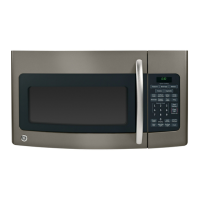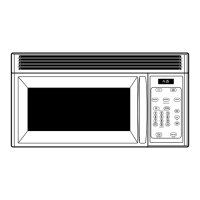m
SPECIAL N07 2S ABO I_ZFMICRO WAVING
SAFETYFACT
SUPERHEATEDWATER
Liquids,such as water,
coffee or tea, are able to
be overheated beyond the
boiling point without
appearingto be boiling.
Visiblebubbling or boiling
when the containeris
removedfrom themicrowave
oven is not always present.
THISCOULDRESULT
/N VERYHOTLIQUIDS
SUDDENLYBOILING OVER
WHEN THECONTAINER/S
DISTURBEDORA SPOON
OROTHERUTENSIL/S
INSERTEDINTO THEL/OU/D.
To reduce the risk of ii_jury
to persons:
-- Do not overheat tile
liquid.
-- Stir tile liquid both
be%re and halt_'ay
through heating it.
-- Do not use straight-
sided containers with
n}lrrOW necks.
-- After heating, allow the
container to stand in
the microwave oven
for a short time betore
removing the container.
-- Use extreme care when
inserting a spoon or
other utensil into the
container.
oAvoid heating baby %od
in glass jars, even with
the lid off. Make sure all
intant %od is thoroughly
cooked. Stir %od to
distribute the heat evenl>
Be careful to prevent
scalding when warming
tornmla or breast milk.
The container may feel
cooler than tile milk
really is. Always test the
milk be%re feeding
the baby.
o Don't defrost fl'ozen
beverages in narrow-
necked bottles (especially
carbonated beverages).
Even if the container is
opened, pressure can
build up. This can cause
the container to burst,
possibly resulting in
i,_.jur>
* Hot toods and steam
C}ln cause burns, ge
careflll when opening
any containers of hot
tbod, including popcorn
bags, cooking pouches
and boxes. To prevent
possible il_jury, direct
smam away from hands
and tilce.
o Do not overcook
potatoes. They could
dehydrate and catch
fire, causing damage
to your oven.
o Cook meat and poultry
thoroughly--meat to
at least an INTERNAl,
temperature of ] 60°F
and poultry to at least an
INTERNAl, temperature
of ] 80°K Cooking to
these temperatures
usually protects against
%odborne illness.
SAVE THESE INS TR UCTYONS

